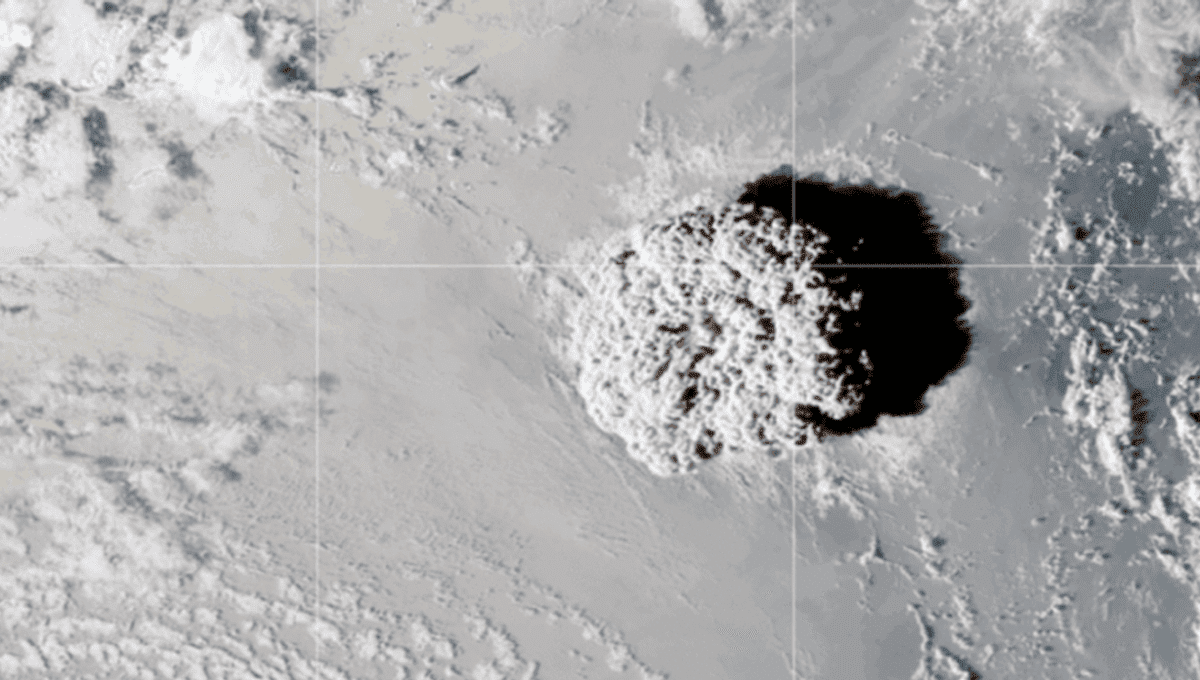
The seismic-in-more-ways-than-one eruption that shook Tonga in January 2022 triggered an electrifying lightning marathon that saw over 192,000 flashes illuminate an ash cloud. The electrical storm lasted over 11 hours and not only produced the most intense lightning storm ever seen but also the largest lightning rings ever observed.
On January 15, 2022, the Hunga Tonga-Hunga Ha’apai eruption rocked the Pacific, generating a powerful and deadly tsunami and launching a plume of material beyond the stratosphere along with 146 billion kilograms (322 billion pounds) of water. It was the biggest volcanic eruption of the 21st century so far, and the loudest sound on Earth since 1883 when the Krakatoa eruption blew out eardrums from 40 miles away.
It’s smashed record after record, and now a new study has revealed that is also unleashed the highest lightning rates ever documented, as well as topping observations for the largest lightning rings.
With the aid of Earth-orbiting spacecraft, the team established that 192,000 lightning flashes occurred across a window of around 11 hours, with around 2,600 flashes per minute at its peak. A light show that puts Disneyland’s fireworks in the bin, then, and also one that occurred at dizzying heights of 20 to 30 kilometers (12 to 19 miles) in the air.
“These results frame an eruptive timeline for this globally important, yet remote, eruption, with implications for monitoring volcanic hazards using real-time lightning data in the future,” wrote the authors of a study describing the storm. “Overall, our observations suggest that volcanic plumes can create the conditions for lightning initiation well outside the range of meteorological thunderstorms previously observed in Earth’s atmosphere.”
When the eruption went off it formed an umbrella cloud that took with it a vast body of water that turned to ice as it was catapulted into the stratosphere, creating crystals that were positively and negatively charged. This combined with the ionized fragments of rock and magma thrown into the mix generated enough electric charge to create lightning.
“We’ve never seen anything like this sheer rate of lightning before, and at such high altitudes,” study lead author Alexa Van Eaton of the U.S. Geological Survey told Space.com.
Inside the cloud, an enormous wave that was 10 vertical kilometers (6 miles) peak to trough surged from the center of the plume to the exterior, which may explain why lightning formed these rings (imagine it like lightning surfing on a circular wave). They’re sometimes known as lightning holes because they’re usually empty, but in the case of the Hunga Tonga-Hunga Ha’apai, the lightning actually filled in the space between, too. As to why that is, scientists aren’t yet sure, but it’s yet another way the historic eruption blew most of the volcanic events in Earth’s history out of the water.
The study is published in Geophysical Research Letters.
Source Link: A Lightning Marathon Lasting 11 Hours Was Triggered By The Tonga Eruption